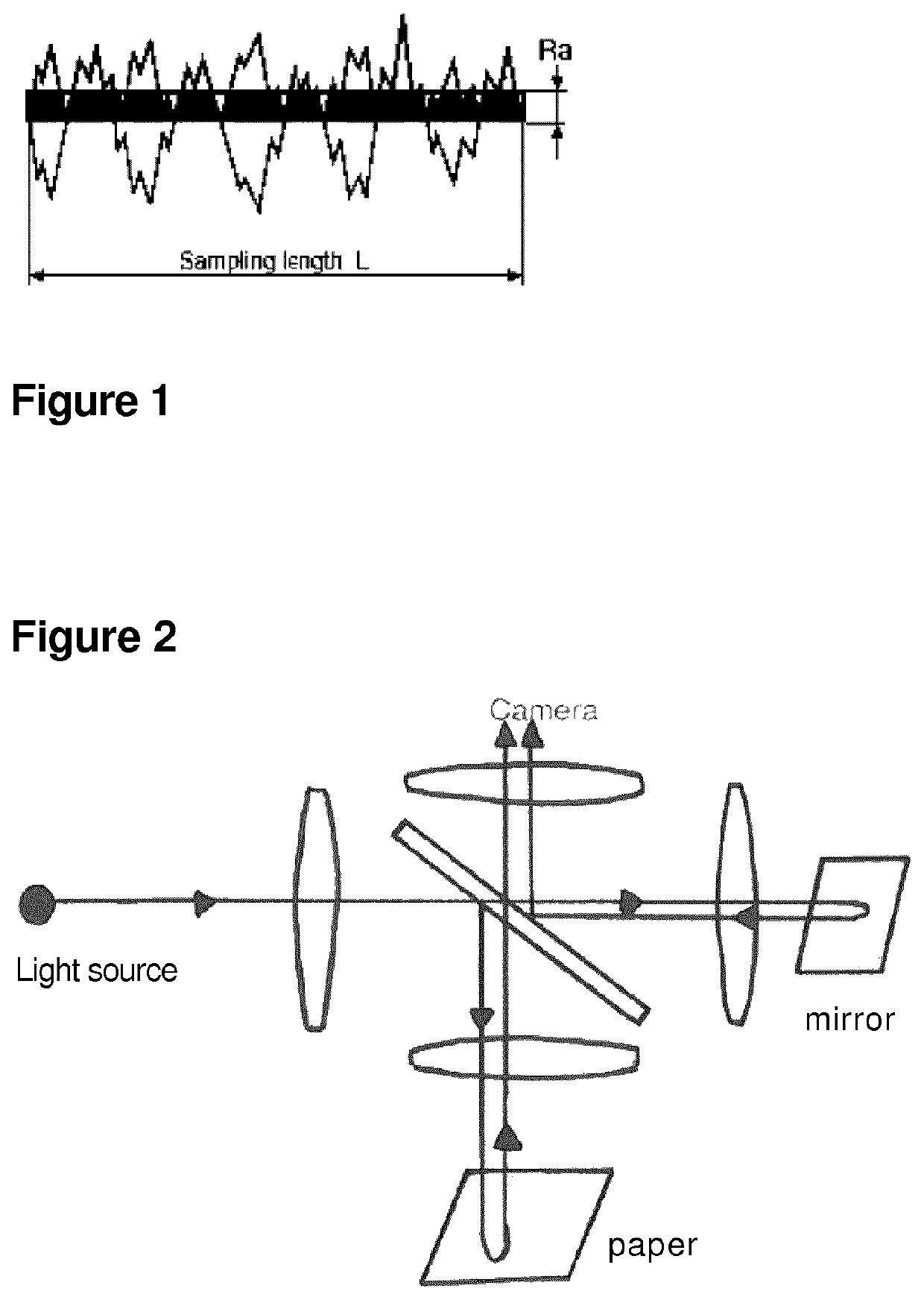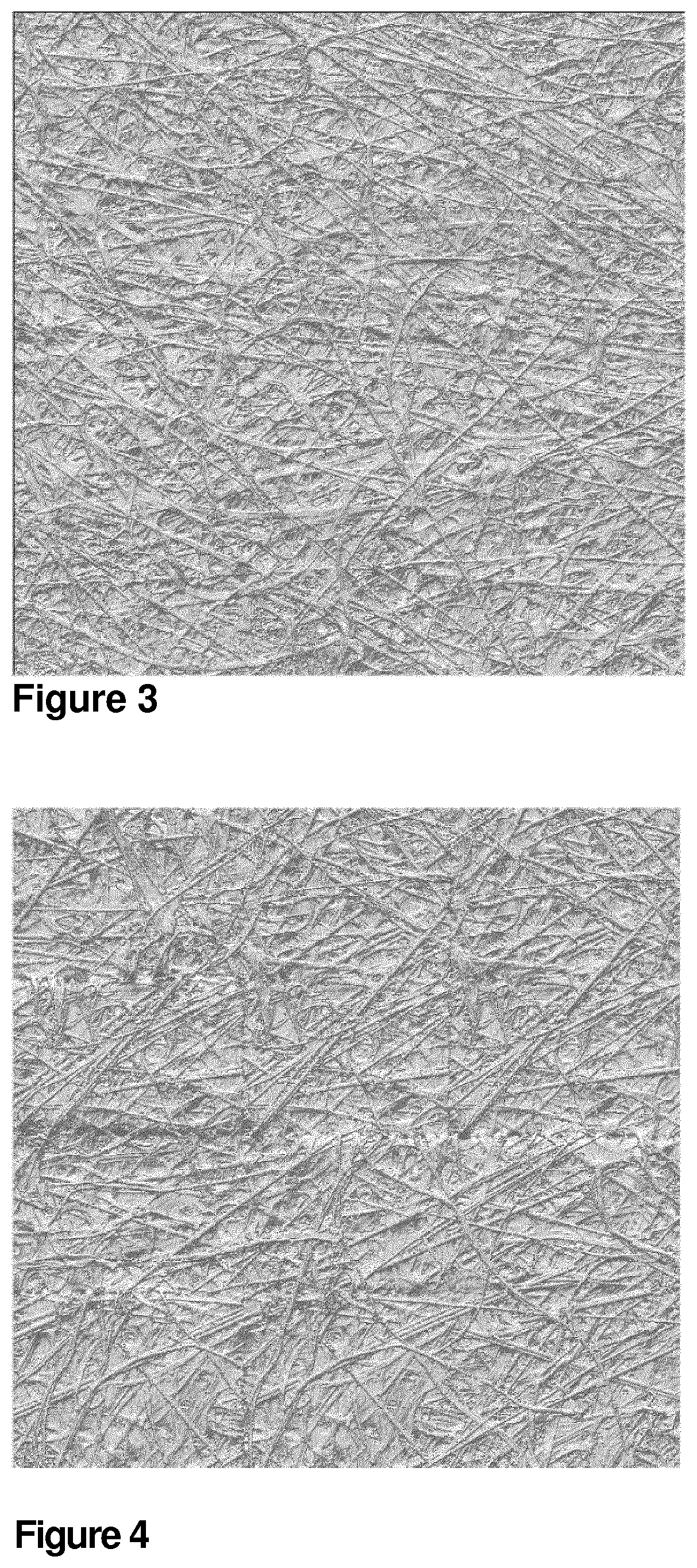Gypsum board suitable for wet or humid areas
a technology of gypsum board and wet or humid area, which is applied in the field of gypsum board, can solve the problems of not giving any information regarding the bonding between and the mat and the gypsum bonding is dramatically weakened
- Summary
- Abstract
- Description
- Claims
- Application Information
AI Technical Summary
Benefits of technology
Problems solved by technology
Method used
Image
Examples
Embodiment Construction
1) Nonwoven Mats
[0137]Two mats F1 and F2 (non woven fabrics) have been manufactured on an industrial papermaking line.
[0138]Each mat comprises two plies (inner+outer).
[0139]The inner ply comprises, in wt % based on the total weight of the fibers:[0140]45% of cellulose fibers (length of about 2.5 to 5 mm, diameter of about 30 micrometers),[0141]14% of polyester fibers (length of about 3 to 12 mm and diameter of about 12 to 13 micrometers), and[0142]41% of glass fibers (length of about 6 to 12 mm and diameter of about 23 micrometers).
[0143]The dry surface weight of the inner ply is about 73 g / m2.
[0144]On the other hand, the outer ply comprises 100% cellulose fibers (length of about 2.5 to 5 mm, diameter of about 15 to 30 micrometers)
[0145]The dry surface weight of the outer ply is about 26 g / m2.
[0146]Both inner and outer plies are impregnated with a mixture comprising (in parts per weight of the impregnation mixture):[0147]67 parts of a binder (self cross-linkable styrene acrylic poly...
PUM
| Property | Measurement | Unit |
|---|---|---|
| surface roughness Ra | aaaaa | aaaaa |
| surface roughness Ra | aaaaa | aaaaa |
| particle size distribution | aaaaa | aaaaa |
Abstract
Description
Claims
Application Information
 Login to View More
Login to View More - R&D
- Intellectual Property
- Life Sciences
- Materials
- Tech Scout
- Unparalleled Data Quality
- Higher Quality Content
- 60% Fewer Hallucinations
Browse by: Latest US Patents, China's latest patents, Technical Efficacy Thesaurus, Application Domain, Technology Topic, Popular Technical Reports.
© 2025 PatSnap. All rights reserved.Legal|Privacy policy|Modern Slavery Act Transparency Statement|Sitemap|About US| Contact US: help@patsnap.com



